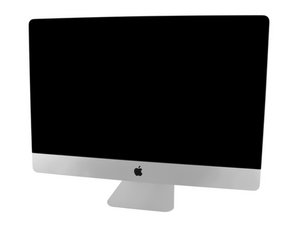Hard Drive failure iMac please help
EMC number: EMC 2834
- I know enough to know enough, and thats not much.
- My iMac crashed randomly after upgrading from High Sierra. I can boot into recovery mode but not safe mode.
In recovery mode it shows no drive to restart, back up from my time machine, etc. I ran Disk-aid and everything says its fine. If I go to wipe it, it states error can’t write last sector. If I hook it to another iMac and boot it into drive mode it shows only the 128g drive.
Thus, it’s safe to assume the Hard Drive has failed in my Fusion Drive set that failed ??
I can’t seem to find a straight answer online, some places say its impossible to work on the drive, etc.
A - Is there anything else a novice can do, i’ve accepted the drive is toast but i’m surprised I can’t do anything other than just replace it.
B - Is my model capable of me just replacing the hard drive?
C - I just ordered a new iMac, so I don’t need a $600 3 TB SSD replacement drive, i’m fine putting in a standard drive.
D - My iFixit tool kit just arrived
E - What drive works in this computer,
F - What glue, gasket, heat tape etc kit do I need.
My dad was a computer programmer for Apple for years, I know the lingo to a degree and have enough confidence to crack the Mac open. What I lack is the knowledge to order the right parts and decipher all the forums, info etc.
Es esta una buena pregunta?

 2
2 
 22
22  38
38 






1 comentario
Ok, lots of info.
A- After i put in the new drive ill just install Mojave to remove the need the extra cost of the sensor. I have a jump drive i will use and create a boot disk that way.
B-ill just buy a 2-3tb hard drive and call it good, this will just be my back up desktop for my kids to use.
C- Items i will need
C1- cardboard service wedge
C2-adhesive strips with tool
C3- what type of hard drive do you recommend? i have never had a hard drive in any of my macs in 21 years ever go bad, this is the first (my iMac that is 3 years older than this one being discussed still has the original drive)
- de Sean